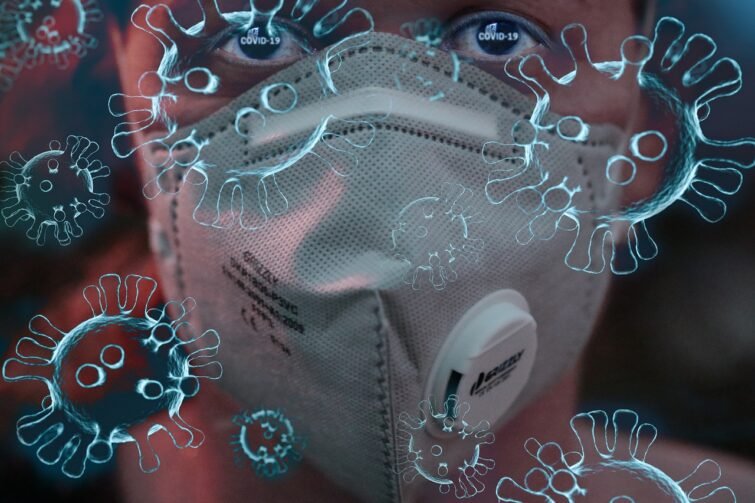Introduction: Lyme Disease and America’s Health Today.
Lyme disease is one of the most common vector-borne diseases in the United States, affecting thousands of individuals each year. It has become a significant public health concern, impacting not only physical health but also emotional and mental well-being. While medical advancements continue to evolve, many Americans still struggle with diagnosis, treatment, and long-term management of Lyme disease. In this blog, we will explore how Lyme disease affects individuals, the broader health system, and the overall state of well-being in America today.
This article is for educational purposes only. Please consult a medical professional for any health-related concerns.

# Understanding Lyme Disease
Lyme disease is caused by the bacterium *Borrelia burgdorferi* and is primarily transmitted to humans through the bite of infected black-legged ticks, commonly known as deer ticks. If left untreated, the infection can spread to joints, the heart, and the nervous system, leading to severe complications.
# Symptoms of Lyme Disease
– Early Signs (3-30 days after tick bite)
– Erythema migrans (bull’s-eye rash)
– Fever and chills
– Headache
– Muscle and joint pain
– Fatigue
– Later Symptoms (weeks to months after infection)
– Severe headaches and neck stiffness
– Arthritis with severe joint pain
– Facial palsy (loss of muscle tone in the face)
– Heart palpitations or irregular heartbeat
– Nerve pain and inflammation of the brain and spinal cord
Since symptoms can mimic other diseases, Lyme disease is often misdiagnosed, leading to delayed treatment and prolonged suffering.
# Why Lyme Disease is a Growing Concern in America
Several factors contribute to the rising cases of Lyme disease across the country, affecting overall public health.
#1. Increasing Tick Populations
Climate change, deforestation, and urban expansion have created environments where ticks thrive, leading to a higher risk of transmission. Warmer winters allow ticks to remain active for longer periods, expanding their geographic reach.
#2. Misdiagnosis and Delayed Treatment
Many patients go undiagnosed for months or even years because Lyme disease symptoms resemble those of other conditions like chronic fatigue syndrome, fibromyalgia, or multiple sclerosis. The lack of reliable testing adds to the complexity of diagnosing the disease accurately.
#3. Rising Healthcare Costs
The medical expenses associated with Lyme disease, including doctor visits, lab tests, medications, and long-term treatment, place a burden on both individuals and the healthcare system. Chronic Lyme disease, which some patients experience even after antibiotic treatment, results in additional costs and ongoing medical needs.
# The Emotional and Social Impact of Lyme Disease
Beyond the physical symptoms, Lyme disease affects individuals’ emotional and social well-being. Many patients struggle with mental health issues due to prolonged illness and societal misunderstandings.
#1. Mental Health Challenges
– Anxiety and depression are common among Lyme disease patients due to chronic pain, fatigue, and the frustration of being misunderstood.
– Cognitive impairment, known as “Lyme brain,” affects memory, concentration, and decision-making abilities, making daily life difficult.
#2. Impact on Relationships and Work
– Many people with Lyme disease find it challenging to maintain personal relationships due to their fluctuating health conditions.
– The inability to work due to fatigue and pain leads to financial stress, further impacting emotional well-being.
#3. Stigma and Lack of Awareness
– Many patients face skepticism from doctors, employers, and even family members who may not fully understand the severity of their condition.
– The ongoing debate over the existence of chronic Lyme disease creates divisions within the medical community, leaving patients feeling isolated and unheard.
# How America is Responding to the Lyme Disease Epidemic
Efforts are being made at both governmental and community levels to address Lyme disease and improve public health outcomes.
#1. Advances in Diagnosis and Treatment
– New blood tests are being developed to improve early detection of Lyme disease.
– Some researchers are working on potential vaccines to prevent Lyme infection.
– The medical community is advocating for more comprehensive treatment plans, including long-term antibiotic therapy for chronic Lyme patients.
#2. Public Awareness Campaigns
– Health organizations are running educational programs to inform the public about Lyme disease prevention, including proper tick removal techniques and protective clothing recommendations.
– Celebrities and public figures who have battled Lyme disease are raising awareness and funding for research.
#3. Government Policies and Support
– The U.S. government has increased funding for Lyme disease research and prevention programs.
– Some states have passed laws protecting doctors who treat chronic Lyme disease with long-term antibiotics, a controversial but essential treatment method for many patients.
# Preventing Lyme Disease: What You Can Do
Since there is no guaranteed way to avoid tick bites entirely, taking preventive measures can significantly reduce the risk of contracting Lyme disease.
#1. Personal Protection Measures
– Wear long sleeves and pants when in wooded or grassy areas.
– Use insect repellents containing DEET, permethrin, or picaridin.
– Conduct thorough tick checks on yourself, your children, and pets after spending time outdoors.
#2. Environmental Management
– Keep grass short and remove leaf litter from yards to reduce tick habitats.
– Create tick-safe zones by using gravel or wood chips as barriers between lawns and wooded areas.
– Treat pets with veterinarian-approved tick preventatives to prevent tick infestations in homes.
#3. Early Detection and Prompt Treatment
– If you find a tick attached to your skin, remove it carefully using tweezers, ensuring you pull it out completely.
– Monitor for symptoms and seek medical attention if any signs of Lyme disease appear.
– If diagnosed, begin antibiotic treatment immediately to prevent complications.
# Conclusion
Lyme disease continues to be a major public health challenge in the United States, affecting thousands of people each year. While medical research and public awareness campaigns are making progress, there is still a long way to go in terms of improving diagnosis, treatment, and support for those suffering from Lyme disease.
America’s health landscape is constantly evolving, and addressing diseases like Lyme requires a collaborative effort between the medical community, policymakers, and the general public. By taking preventative measures and advocating for better healthcare solutions, we can work toward a future where Lyme disease no longer threatens the well-being of countless Americans.

Stay informed, stay safe, and prioritize your health.
This article is for educational purposes only. Please consult a medical professional for any health-related concerns. Thank you.
Last Updated on 2 weeks by Ravikant Janrao




Pingback: Pope Leo XIV: Advancing Love, Relationships, And Health In A Global Context.(2025 Updates) - LOVE AND HEALTH FUTURE